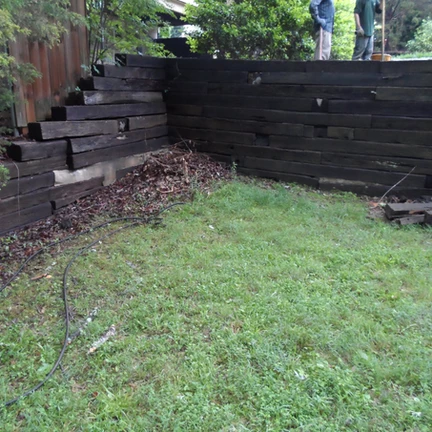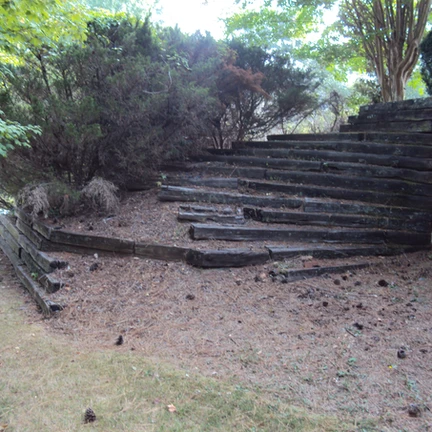Railroad ties have been used the past few decades as a cheap solution for retaining walls in residential homes and commercial properties. What homeowners don’t realize, is that these cross ties are not only harmful to the environment, but they pose a huge health threat!
Railroad ties have been used the past few decades as a cheap solution for retaining walls in residential homes and commercial properties. What homeowners don’t realize, is that these cross ties are not only harmful to the environment, but they pose a huge health threat!
Lets start with the facts:
- Railroad ties are treated with a chemical called Creosote
- Creosote is a chemical that is created when coal is heated to produce coke (a cleaner burning form of coal) or natural gas. This process produces coal tar creosote, coal tar, and coal tar pitch, which are all mixtures of similar compounds and are referred to here simply as creosote.
- Due to the heat in the South, this tar like chemical melts and can get into your plants, soil, and ground water.
- Creosote has been classified by the Environmental Protection Agency (EPA) as a probable carcinogen. Studies have shown increased risk of cancer and respiratory problems in plant workers repeatedly exposed to creosote. Exposure to creosote on the skin has been shown to cause rash and irritation and in an extreme case, cancer.
- EPA did push tougher legislation in 1986 to stop the use of creoste, BUT timbers are still out there that were used before this time period, and they still do treat timbers with this chemical.
Here are the precautions that should be used when handling railroad ties:
- Handling: When handling creosote treated wood, wear gloves and long sleeves and try to minimize time spent working with ties. Work in well ventilated areas and avoid working in hot conditions when vapors are most potent.
- Children: If children play on or around the ties they may get creosote on their skin and clothing and could subsequently ingest small amounts. Exposure to skin can cause irritation and rashes. Ingestion in small amounts while not life threatening, is a health concern.
- Gardens: Plants have shown only limited potential to take up creosote but some compounds have been shown to attach to roots, which could lead to elevated creosote levels on tuber vegetables. For this reason, it is advisable not to landscape with railroad ties directly in contact with vegetable gardens.
- Water Table:Some components of creosote are very sticky and not water soluble and will stay on the ties; however, other chemicals are water soluble and will dissolve and move with water. In areas where moisture levels are moderate, these chemicals may wash into surrounding soil with rain, but will likely decompose with time. However, in areas where the water table is very shallow or where a lot of surface water is present, there is more potential for transport of the chemicals into groundwater.For this reason, it is advisable to avoid using railroad ties for landscaping in very wet or shallow ground water areas.
- Disposal and Fire: Creosote treated wood should not be burned, since burning volatilizes hazardous chemicals in the smoke. One currently suggested disposal method for treated wood is in sanitary landfills. However, check with your landfill first to inquire about local policies. Another currently suggested method for disposal is burial. However, if this option is chosen it is critical to consider surface and ground water movement in your location to minimize the possibility of creosote getting into water supplies.
A landscaping contractor should be called to dispose of ties and it will be a little expensive because of the chemicals involved. If you get a cheap price, beware because they may not be disposing properly and you both will be prosecuted if caught!
You can get timbers untreated but they have a shorter lifespan as any wood that is untreated. The best way to go is with untreated railroad ties, pressure treated landscaping timbers, or block.
For more information on this, go to http://waterquality.montana.edu/docs/wqfaqarchives/wq_faq_3.shtml.



